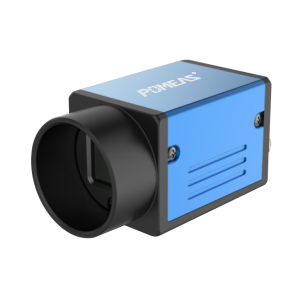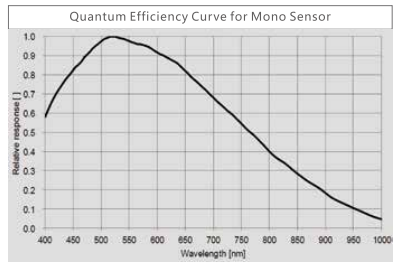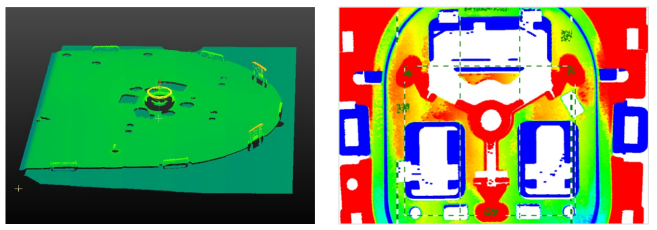An area camera, also known as an area CCD or CMOS camera, is a camera that uses a planar-type imaging sensor. Its core component is a rectangular array of face-array sensors consisting of thousands of small photoelectric conversion units, each of which captures a single pixel point in an image. In the field of machine vision inspection, surface array cameras show a number of significant advantages.


High Resolution and Intuitive Imaging
Face array cameras are able to provide high resolution images due to the large number of pixel dots. This high resolution feature enables the face array camera to capture more details during the inspection process, thus improving the accuracy and precision of the inspection. In addition, the face array camera is able to capture a complete image with intuitive imaging, which facilitates subsequent processing and provides a good foundation for machine vision inspection.
Fast imaging and dynamic capture
Compared with the line array camera, the surface array camera can complete the capture of the whole picture more quickly. This feature makes the surface array camera perform well in shooting dynamic scenes, and can capture the continuous movement of objects, which provides strong support for dynamic detection. At the same time, the fast imaging capability of the surface array camera also improves the inspection efficiency and reduces the cost of inspection time.

Wide range of applications
Face-array cameras are used in a wide variety of applications, including consumer-grade digital cameras, cell phone cameras, medical imaging, satellite remote sensing, and industrial inspection. In machine vision inspection, face-matrix cameras can be used in a variety of ways, such as decoding 1D and 2D codes, automated optical inspection, pattern recognition, color and defect detection, product quality grade classification, automated inspection of print quality, text recognition, and texture recognition. Its wide range of applications proves the importance and usefulness of face array cameras in machine vision inspection.

Flexible operating modes
The working modes of the face array camera are diversified, including continuous mode, trigger mode and asynchronous reset mode. These different working modes enable the face array camera to adapt to different inspection needs, improving the flexibility and adaptability of inspection. For example, in production lines that require continuous monitoring, the face array camera can be used in continuous mode for real-time detection; while in occasions that require precise control of the detection timing, it can be used in triggered mode for precise capture.
Easy maintenance and commissioning
Maintenance and commissioning of the surface array camera is relatively easy. Due to its intuitive and easy to understand imaging, technicians can find the problem faster and repair it during the commissioning process. In addition, the relatively simple hardware structure of the surface array camera, making it relatively low maintenance costs.
Product recommendation
TECHNICAL SOLUTION
MORE+You may also be interested in the following information
FREE CONSULTING SERVICE
Let’s help you to find the right solution for your project!


 ASK POMEAS
ASK POMEAS  PRICE INQUIRY
PRICE INQUIRY  REQUEST DEMO/TEST
REQUEST DEMO/TEST  FREE TRIAL UNIT
FREE TRIAL UNIT  ACCURATE SELECTION
ACCURATE SELECTION  ADDRESS
ADDRESS Tel:+ 86-0769-2266 0867
Tel:+ 86-0769-2266 0867 Fax:+ 86-0769-2266 0867
Fax:+ 86-0769-2266 0867 E-mail:marketing@pomeas.com
E-mail:marketing@pomeas.com
